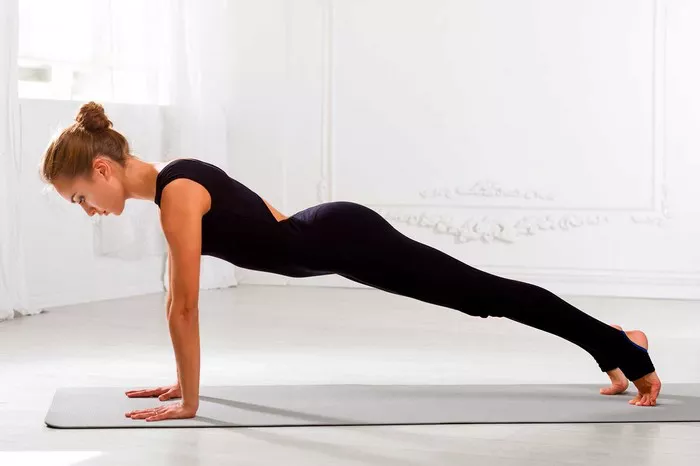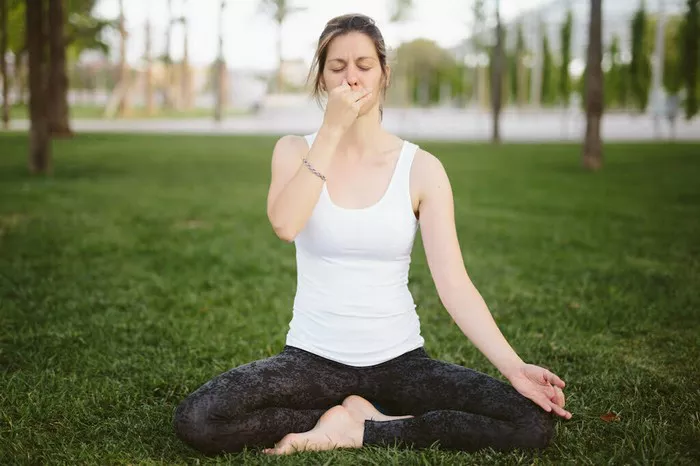Jnana Yoga, often referred to as the “Path of Knowledge” or “Path of Wisdom,” is one of the principal paths in Hindu philosophy designed to lead an individual towards self-realization and liberation (moksha). This spiritual path is grounded in the pursuit of knowledge and wisdom, aiming to dissolve the illusions and ignorance that obscure the true nature of reality. Through rigorous self-inquiry and philosophical contemplation, practitioners of Jnana Yoga seek to discern the eternal, unchanging truth from the transient, illusory aspects of existence.
Historical and Philosophical Context
Jnana Yoga finds its roots in the ancient Indian scriptures, particularly the Upanishads, which are considered the end part of the Vedas, the most sacred texts of Hinduism. The Upanishads emphasize the importance of self-knowledge and the realization of the Atman (the individual soul) as being one with Brahman (the universal soul or ultimate reality). This non-dualistic (Advaita) philosophy was later systematized by the great philosopher Adi Shankaracharya in the 8th century CE, who elaborated on the principles of Advaita Vedanta.
In the Bhagavad Gita, another seminal text, Jnana Yoga is extolled as one of the paths to attain liberation, alongside Karma Yoga (the path of selfless action) and Bhakti Yoga (the path of devotion). Krishna, the divine charioteer, instructs Arjuna on the nature of true wisdom and the necessity of recognizing the eternal self beyond the physical body and mind.
Core Concepts of Jnana Yoga
Atman and Brahman
Central to Jnana Yoga is the understanding of Atman and Brahman. Atman refers to the individual self or soul, which is distinct from the ego or personal identity. Brahman is the ultimate reality, the infinite and unchanging source of all existence. The fundamental teaching of Jnana Yoga is the realization that Atman and Brahman are one and the same. This non-dual perspective asserts that the apparent separation between the individual self and the universal consciousness is an illusion (maya).
Avidya and Maya
Avidya, meaning ignorance or lack of true knowledge, is considered the primary obstacle in Jnana Yoga. This ignorance leads to the misconception that the self is separate from the ultimate reality. Maya is the cosmic illusion that creates the appearance of diversity and multiplicity in the world. It is through the veil of maya that individuals perceive themselves as distinct entities, experiencing the world through the limited faculties of the mind and senses.
Discrimination (Viveka) and Dispassion (Vairagya)
Two essential practices in Jnana Yoga are Viveka and Vairagya. Viveka is the faculty of discrimination, the ability to discern the real from the unreal, the eternal from the ephemeral. Practitioners develop viveka by constantly questioning and reflecting upon their experiences and understanding.
Vairagya, on the other hand, is the cultivation of dispassion or detachment. It involves renouncing attachments to the transient aspects of existence, including desires, possessions, and egoic identifications. This detachment does not imply indifference but rather a deep understanding of the impermanent nature of worldly phenomena, leading to a state of inner freedom and equanimity.
The Benefits of Jnana Yoga
Jnana Yoga offers profound benefits for those dedicated to its practice. Some of these include:
1. Self-Realization: The ultimate goal of Jnana Yoga is the realization of the true self beyond the illusions of ego and maya. This realization brings a deep sense of peace, fulfillment, and liberation from the cycles of birth and death (samsara).
2. Inner Clarity and Wisdom: Through the practices of self-inquiry, contemplation, and meditation, practitioners develop a clear and discerning mind, capable of perceiving the deeper truths of existence.
3. Detachment and Freedom: Cultivating detachment from desires and attachments leads to inner freedom and equanimity. Practitioners become less affected by the ups and downs of life and maintain a state of inner peace and balance.
4. Ethical Living: The emphasis on ethical conduct and moral integrity fosters a life of virtue, compassion, and harmony with oneself and others.
Stages and Practices in Jnana Yoga
The journey of Jnana Yoga is often described as a process of self-inquiry and realization, comprising several stages and practices. These stages are not strictly linear but represent a deepening of understanding and experience.
Sravana (Listening)
Sravana is the initial stage of Jnana Yoga, where the seeker listens to the teachings of the scriptures and enlightened teachers. This stage involves attentive and receptive listening, absorbing the profound truths of the Upanishads and other sacred texts. The guidance of a qualified guru or teacher is often crucial in this stage, as they help interpret and elucidate complex philosophical concepts.
Manana (Reflection)
Manana involves deep reflection and contemplation on the teachings received during sravana. This stage requires the practitioner to engage in intellectual inquiry, questioning, and reasoning to internalize the wisdom and resolve any doubts or contradictions. Through manana, the seeker moves from mere intellectual understanding to a more profound and intuitive grasp of the truths.
Nididhyasana (Meditative Contemplation)
Nididhyasana is the process of deep meditation and contemplation on the ultimate reality. In this stage, the practitioner goes beyond intellectual reflection and immerses in direct, experiential awareness of the self. This meditative absorption leads to the dissolution of the ego and the direct realization of the oneness of Atman and Brahman.
Samadhi (Absorption)
Samadhi represents the culmination of Jnana Yoga, where the seeker attains a state of complete absorption in the ultimate reality. In this state, the distinctions between the individual self and the universal consciousness dissolve, resulting in a profound experience of unity and liberation. Samadhi is characterized by bliss, inner peace, and the realization of one’s true nature beyond all limitations and dualities.
Jnana Yoga in Practice
While the philosophical tenets of Jnana Yoga are profound and abstract, the practice itself is accessible to individuals willing to engage in sincere self-inquiry and reflection. Here are some practical steps and exercises for aspiring practitioners:
Self-Inquiry (Atma Vichara)
Self-inquiry, also known as Atma Vichara, is a fundamental practice in Jnana Yoga. Popularized by the sage Ramana Maharshi, this practice involves continually asking the question, “Who am I?” The aim is to peel away the layers of identification with the body, mind, emotions, and ego, eventually leading to the recognition of the true self.
To practice self-inquiry, find a quiet place to sit and meditate. Begin by observing your thoughts and feelings without attachment. Whenever a thought or identification arises, ask yourself, “Who is experiencing this?” or “Who am I?” Persistently investigate the source of your sense of self until you transcend the ego and experience the pure consciousness that underlies all phenomena.
Contemplative Reading and Reflection
Engaging with the teachings of the Upanishads, Bhagavad Gita, and other spiritual texts is a vital aspect of Jnana Yoga. Dedicate regular time to read and contemplate these scriptures, reflecting on their deeper meanings and implications. Keeping a journal to record your insights and questions can also be helpful.
Meditation and Mindfulness
Regular meditation is essential in Jnana Yoga. Practice mindfulness and meditation to develop inner stillness and awareness. Techniques such as focusing on the breath, repeating a mantra, or visualizing a symbol of the divine can aid in calming the mind and deepening your meditative state. Over time, this practice cultivates the inner clarity necessary for self-inquiry and contemplation.
Discrimination and Detachment in Daily Life
Apply the principles of discrimination (viveka) and detachment (vairagya) in your daily life. Practice discerning the eternal essence in every situation and interaction, and cultivate detachment from transient desires and attachments. This does not mean renouncing the world but rather engaging with it from a place of inner freedom and wisdom.
Seek Guidance from a Guru
The guidance of a knowledgeable and experienced guru or teacher can be invaluable in Jnana Yoga. A guru can provide personalized instruction, clarify doubts, and offer support and encouragement on the path. If a physical guru is not accessible, consider studying the teachings of realized masters through their writings, recordings, and online resources.
The Role of Ethics and Morality in Jnana Yoga
While Jnana Yoga primarily focuses on the pursuit of knowledge and self-realization, ethical conduct and moral integrity are foundational to this path. The practice of virtues such as truthfulness (satya), non-violence (ahimsa), and purity of mind (shaucha) creates a conducive environment for spiritual growth and the attainment of wisdom.
Yamas and Niyamas
The yamas and niyamas, outlined in the Yoga Sutras of Patanjali, serve as ethical guidelines for all yoga practitioners, including those on the path of Jnana Yoga. The yamas (restraints) include non-violence, truthfulness, non-stealing, chastity, and non-possessiveness. The niyamas (observances) include purity, contentment, discipline, self-study, and surrender to the divine.
Adhering to these ethical principles helps purify the mind and cultivate the inner clarity and discipline necessary for the deeper practices of Jnana Yoga. By aligning actions with ethical values, practitioners create a harmonious and supportive foundation for their spiritual journey.
Conclusion
Incorporating the principles and practices of Jnana Yoga into modern life enables individuals to cultivate inner clarity, wisdom, and freedom amidst the challenges and distractions of the contemporary world. By embracing mindfulness, self-inquiry, ethical living, and surrender to the higher self, one can embark on a transformative journey of self-discovery and self-realization.
















